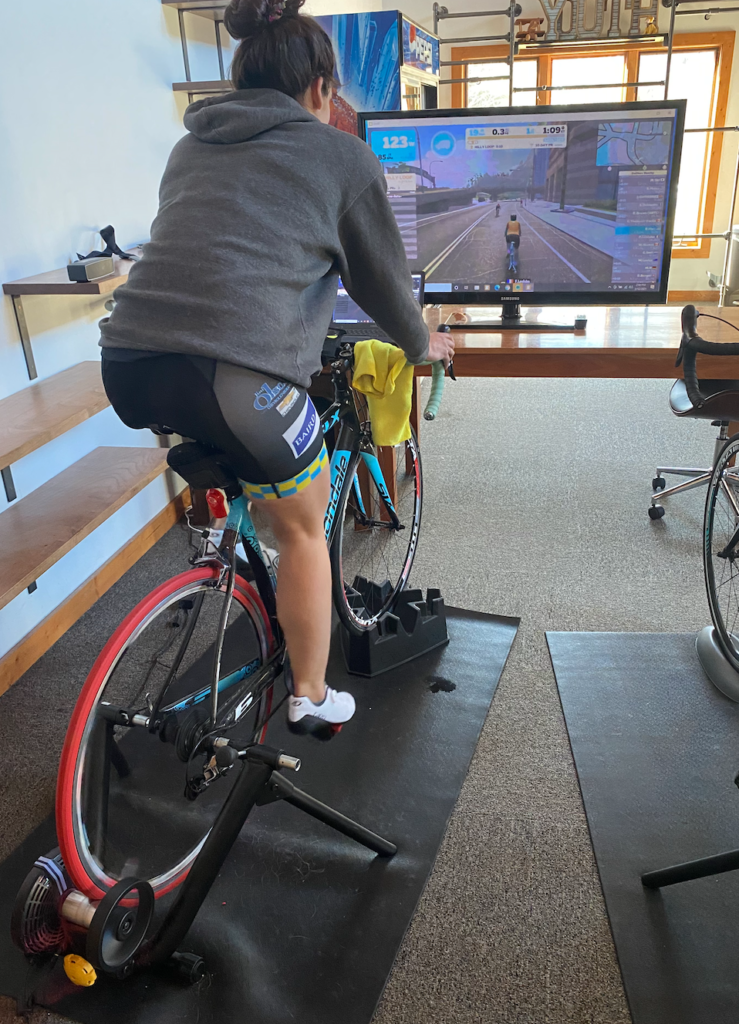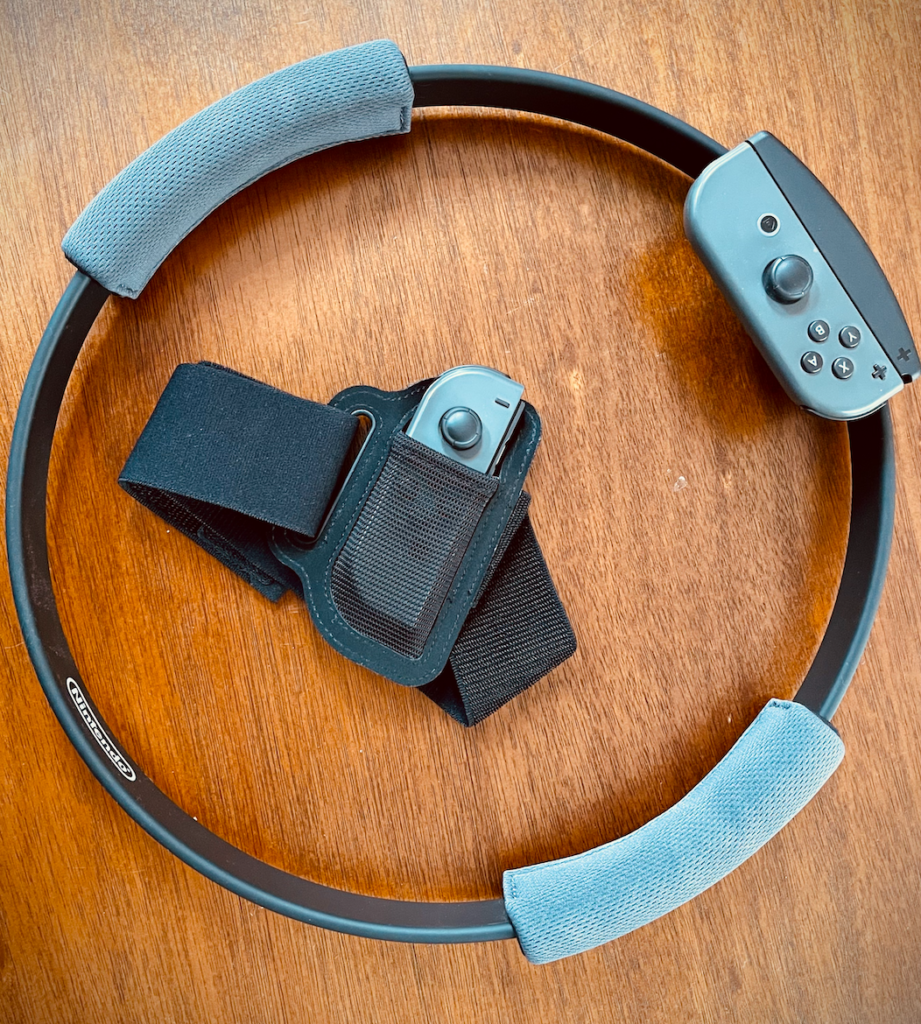Together, Apart
- Share
- Tweet
- Pin
- Share

Home-workout innovations provide connections
Finding time to work out can be a challenge. Do I schedule gym time before or after work? I’m no stranger to hitting the YMCA at 5:30 am, but then when do I sleep? Add a young child to the mix, and sometimes it seems like the exercise puzzle piece was shipped with a factory imperfection.
The pandemic set up a new hurdle to leap. Enter the home-workout experience.
I don’t find regular exercise very fun. Neither do I have the space for gym equipment. With those two facts guiding my decisions, I stood in Target one morning in early January holding the biggest video-game box I’d ever held. Ring Fit Adventure is Nintendo’s latest foray into the world of fitness-focused video games. I grew up on Nintendo games, so this seemed like a perfect fit.

Unfortunately, I don’t have much experience with the game because after watching me play my first session, my wife, Victoria, asked whether she could play next. She has now logged more than 40 hours, playing three to five times a week.
I should mention that she does not like video games.
Ring Fit uses a proprietary resistance ring, which, coupled with a motion sensor strapped to your leg, maps your movements onto an on-screen avatar.

Rather than walk you through guided routines – though short workouts are an option – Ring Fit has you jogging through a video-game world full of items to collect, nonplayable characters to interact with and enemies to battle. These battles provide the majority of the exercise routines you’ll do as you engage in turn-based battles similar to those of a standard role-playing game such as Pokémon. Unlike Pokémon, in which you battle with physical and magical attacks, you face your opponents by doing reps of various targeted exercises, from squats and lunges to crunches and yoga poses.
Normally Victoria might exercise for 30 minutes to an hour a day, but sometimes she gets so engaged in a session of Ring Fit that she doesn’t want to stop. After one more set of battles, she might unlock the smoothie shop, where she can get recovery smoothies to heal during fights. After one more sprint through a level full of collectible currency, she’ll be able to afford more clothing for her character to wear.
Victoria and I weren’t the only ones who turned to Ring Fit for a home-workout alternative. The game launched in October 2019 and sold 2.73 million copies worldwide. When the pandemic closed gyms in March 2020, that number grew to 5.84 million copies as of September 2020. And sales may have been even higher, save for the fact that it was nearly impossible to find Ring Fit on store shelves for much of the summer, with stock being obliterated worldwide during the pandemic’s early months.
The gamification of exercise has practically exploded in the past 12 months. Ashley Lusk, who founded Homebody Personal Training, has turned to Zwift, which connects to her exercise bike to link her virtually with her friends to bicycle through fantasy environments. Rather than just comparing routes and times through a fitness tracker, Zwift users can see their friends’ avatars cycling beside them in real time, which introduces a fun level of competition to an otherwise isolated workout. “I am not a strong biker,” Lusk said, “so when I’m on there and I’m falling behind the group, I’m like, ‘Oh, my God! I need to catch up!’ It definitely pushes me a lot.”
Lusk’s boyfriend has begun using Zombies, Run!: an interactive, almost podcast-like experience that adds a gripping narrative to a run, amping up the difficulty from time to time by introducing the sounds of zombies nipping at your heels.
For Chris Hockers, reduced gym time hasn’t been a problem.
“We already had all the equipment in our [home] gym,” Hockers said. “Just the peace of mind, knowing I could go into my gym and it was just going to be me and my wife in there.”
Hockers started building his home gym years ago with a well-rounded set of dumbbells. It’s been a slow process, and he’s added pieces over time, but when the pandemic hit last year, Hockers decided it was time to add more equipment to his arsenal.
He wasn’t the only one.
“You wouldn’t believe how fast stuff was flying off Craigslist and Facebook Marketplace when this thing hit,” Hockers said. “There are still six-to-eight-week wait times on equipment.”
Although decreased gym time is challenging, the innovations of the past year have had a positive effect in increasing accessibility and providing new and unusual experiences to those who are trying to maintain their fitness engagement – and even to those who are trying to open that door for the first time.


